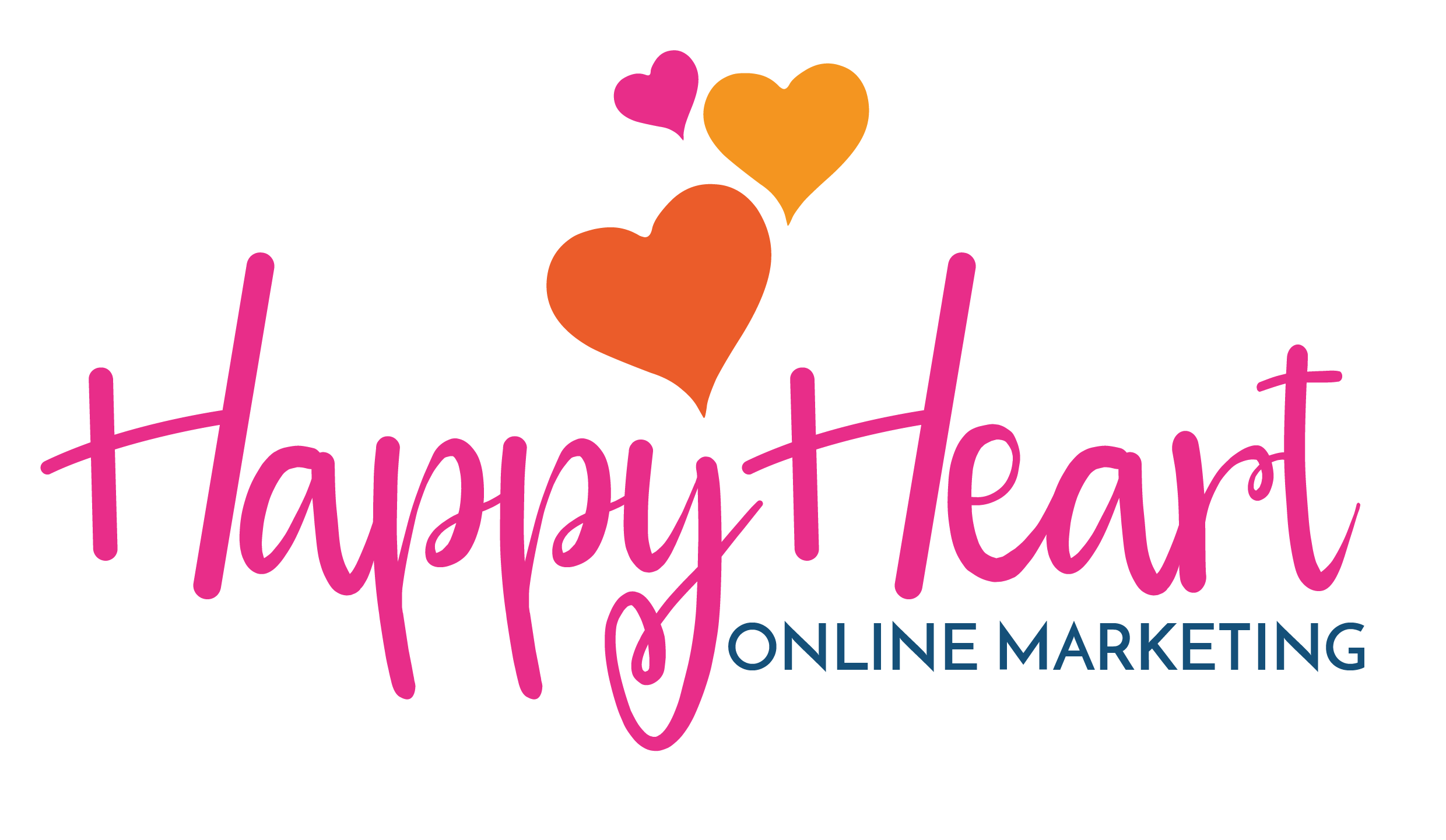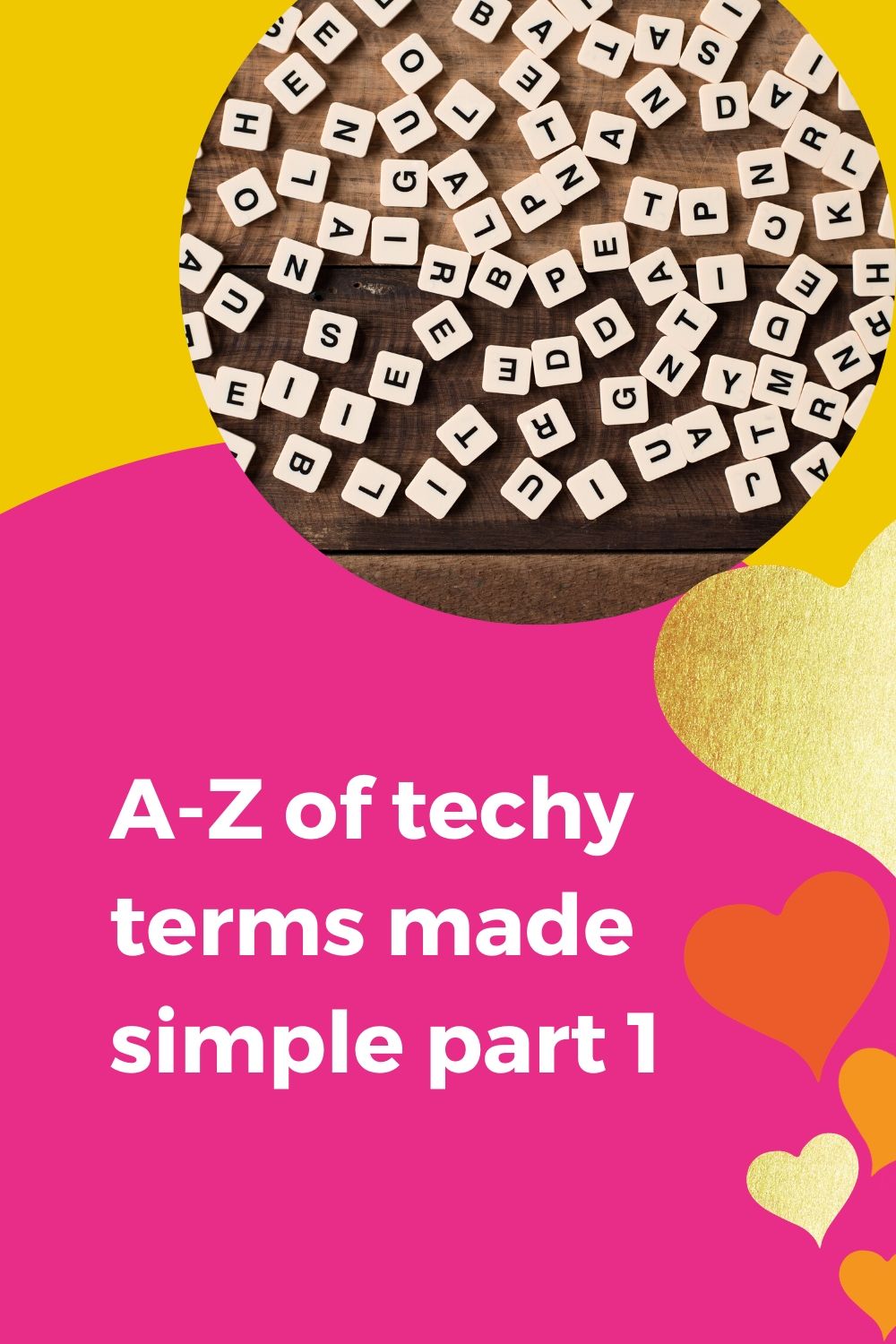Learning your way around your website takes time – as does any new skill for any novice. And as your WordPress/website building knowledge grows, so too will your confidence.
But very often, all it takes is a spotting of technical terms or a jumble of jargon to put a chink in your technical confidence, and you start to doubt your web skills.
Did you know, though, that many of the geeky terms associated with websites/web development/design are not as scary as you might think? Some are pretty simple to understand, actually. So in an attempt to stop that thinking and doubting in its tracks, here are my very basic explanations of some of the techie web terms you might come across.
A is for…
- Anchor Text
You know when you see a hyperlink in a web page that looks something like this: happyhearthq.com ? This blue, clickable text (which changes colour when you’ve clicked the link) is your anchor text. It helps with SEO (search engine optimisation) too
B is for…
- Backend
This is the part of your website that is hidden from regular visitors. So if people talk about the back end, working on the back end, or getting help to manage the back end, it’s more to do with the information structure, applications, techy stuff, and management systems than your website’s shop front.
- Backlink
When other sites link back to your website, this is known as a backlink (sometimes known as trackbacks, too). Check out how many backlinks you have on your website here for free https://monitorbacklinks.com/seo-tools/free-backlink-checker
- Bandwidth
Just to add a smattering of confusion here, bandwidth can have two different meanings:
- Data transfer rate – ie the rate by which data can be transferred from one place to another (ie downloading a video from YouTube)
- The total amount of data a web host will transfer each month (or week or quarter) before additional charges are incurred.
- Bounce Rate
When someone clicks on the home page of your website and leaves from the home page (without clicking through any other pages) this is known as a bounce. When this bounce is changed into a percentage, it is known as your bounce rate. If you want to improve your bounce rate you could try to make your website navigation better.
- Browser
This is the programme a visitor uses to view your website. It could be Google Chrome, Opera, Safari, Firefox, or Internet Explorer (or a whole cast of others!).
C is for…
- Cache/Caching
Each web page is made up of files and every time you visit a web page, those files are downloaded and saved on your PC – this is known as being ‘cached’. It’s designed to help speed up your browsing instead of having to download something every single time you visit that page.
D is for…
- Domain
A domain (or domain name) is the individual name by which a website is recognised. My domain name, for example, is www.happyheartonline.co.uk and it is associated with a specific IP address (which allows one computer or digital device to use the internet to communicate with another).
E is for…
- E-Commerce (or electric commerce)
E-commerce refers to the buying and selling of goods and/or products via websites/online.
H is for…
- html (hypertext Markup Language)
Web pages are written in HTML (a specially designed computer code/language). This makes sure that text, images and particular styles are formatted correctly and look good on the web page.
- htTP (hypertext Transfer Protocol)
When hypertext is transferred between a web browser and server, it needs a set of rules – and that’s what HTTP is.
- htTPS (hypertext Transfer Protocol Secure)
This is HTTP with an extra layer of security. The ‘S’ denotes that the requests between browsers and servers are being carried out over a ‘secure’, encrypted connection. Always look for the additional ‘S’ on the HTTP web links if you’re using an e-commerce site, sharing your credit card details or making any kind of financial transaction, that way you will know the website is classed as safe.
- Hyperlink
As referred to in the ‘Anchor Text’ explanation above, a hyperlink links one web page to another, either on the same site (internal link) or another site (external). They will appear in another colour (often blue) and be underlined, so you’ll notice any hyperlinks pretty quickly in a text-filled web page.
That’s all the techie terms for this article. I hope it’s helped clear some of the fog you may have had about some of the jargon you come across online. Look out for part two in this series where I’ll be explaining everything from landing pages to web servers.
I would love to hear from you if you have any specific terms you’d like an easier explanation of… I’m always happy to help.
By signing up for this you will become an Happy Heart subscriber, which means we’ll email you with things we think you’ll find valuable – our free videos, workbooks and special offers. We’ll never share or sell your personal information. You can unsubscribe at any time



0 Comments